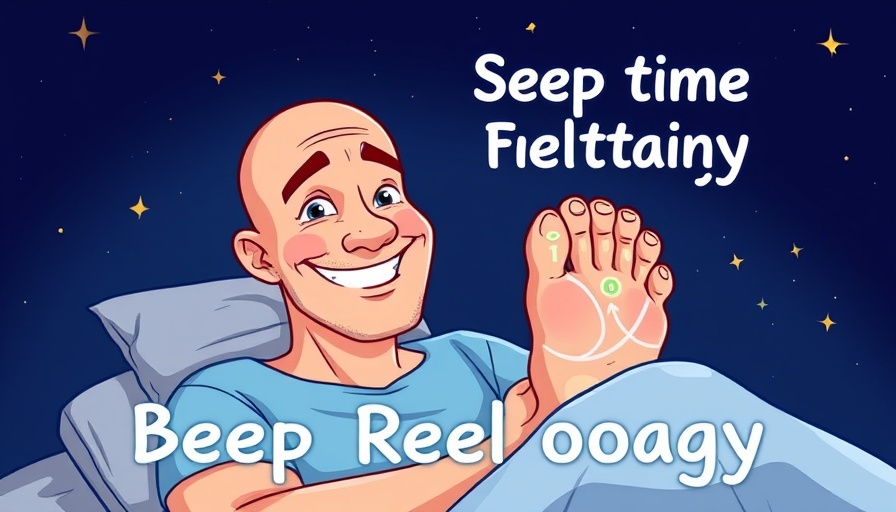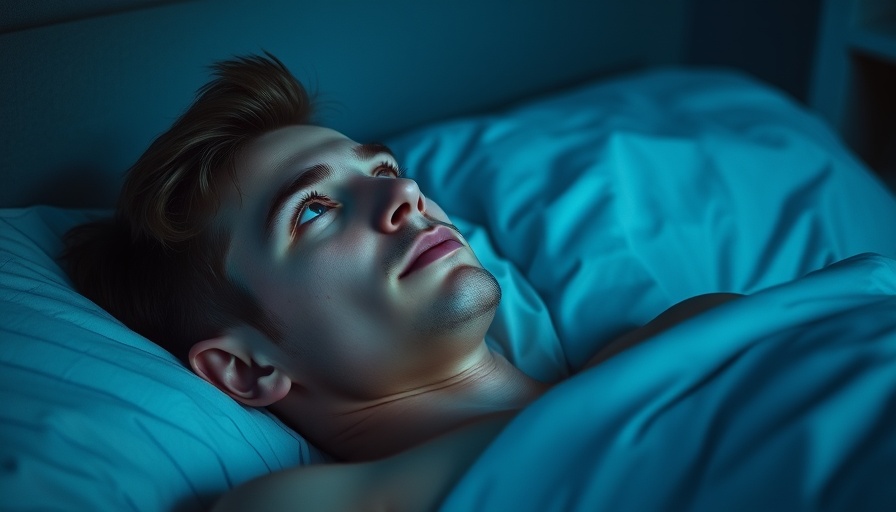
Understanding Sleep: A Foundation for Wellness
As we navigate the complexities of modern life, sleep often takes a back seat to our busy schedules and nightly routines. The importance of a good night's sleep cannot be overstated, particularly in the context of mental health and overall wellness. Recognizing this, pharmacologists emphasize that sleep is not merely a period of rest but a crucial function that aids in the body's recovery and rejuvenation. Disruptions in sleep can lead to substantial implications for our mental wellbeing, underscoring the need for effective sleep strategies.
In 'How to Sleep Fast in 5 Steps: Pharmacist Explains', the discussion dives into practical strategies for improving sleep quality, revealing compelling insights that motivate our deeper analysis.
Step 1: Establishing a Sleep Schedule
One of the primary recommendations for achieving restful sleep is the establishment of a regular sleep schedule. Just like the body craves routine, our circadian rhythm flourishes with consistency. As discussed in the video, a young man struggled with his sleep patterns due to an erratic bedtime, often influenced by habits such as scrolling through social media before sleep. By committing to a set bedtime and wake-up time—even on weekends—individuals can better align their bodies with natural sleep cycles. This consistency not only helps improve sleep quality but also enhances energy levels during the day.
Step 2: Creating a Relaxing Pre-sleep Routine
Transitioning from the busyness of the day to a restful night can be facilitated through a soothing pre-sleep routine. Activities such as reading a book, meditating, or enjoying a warm bath can signal to the brain that it's time to wind down. This gentle transition helps ease the mind and body into a state of relaxation—crucial for falling asleep faster. Avoiding screens and blue light exposure close to bedtime is vital; instead, consider incorporating calming activities that promote mental tranquility.
Step 3: Optimizing Your Sleep Environment
The environment in which we sleep can significantly affect our slumber quality. For instance, many individuals may not realize that a room that is too warm can inhibit their ability to fall asleep. Studies suggest maintaining a bedroom temperature of around 65°F (18°C) for optimal sleep conditions. Moreover, light and noise levels must be controlled; blackout curtains and earplugs can be incredibly beneficial. Designing a sleep environment that is peaceful and conducive to rest promotes better relaxation and deeper sleep.
Step 4: Practicing Relaxation Techniques
For many, the journey to sleep doesn't end with simply lying in bed; it requires deliberate relaxation. Engaging in a body scan technique can help individuals gradually ease tension. Focus means paying attention to each part of the body, consciously relaxing areas that hold stress, from the head down to the toes. This practice prepares the mind for sleep, facilitating a smoother transition into slumber.
Step 5: The Abraham 25-and-5 Sleep Technique
The culmination of these strategies leads us to the groundbreaking Abraham 25-and-5 sleep technique. This simple yet effective method prompts relaxation through breath control. To practice, first breathe in naturally, counting to 25. Once completed, open your eyes slightly—just enough to let light in while maintaining a relaxed state—and count slowly to five, continuing to breathe steadily. This technique harnesses the body’s natural response to calm, inviting sleep in a structured manner. Many who practice this technique find themselves drifting off before finishing a cycle.
The Role of Weighted Blankets
Lastly, the video introduces the intriguing concept of weighted blankets and how they can enhance the sleep experience. These therapeutic blankets envelop individuals in gentle pressure, mimicking the sensation of a comforting hug. High-quality options, like the Bearaby Cotton Napper, are specifically designed to be breathable and keep sleepers cool throughout the night, benefiting those who struggle with sleep. Experts recommend choosing a weighted blanket that is about 10% of one’s body weight for optimal calming effects.
Final Thoughts: Embracing Health and Wellness
Prioritizing sleep is not merely a lifestyle choice but a crucial health decision that can radically improve one's mental health, physical well-being, and overall quality of life. The insights from the video “How to Sleep Fast in 5 Steps” by pharmacist Abraham offer a wealth of practical strategies that anyone can implement. With dedication to a consistent sleep routine, an optimal sleep environment, relaxation practices, and innovative techniques like Abraham's, individuals can achieve the rest they truly deserve. As we learn to embrace holistic health choices, fostering good sleep hygiene is a good place to start, paving the way for a vibrant and fulfilling life.
 Add Row
Add Row  Add
Add 




Write A Comment